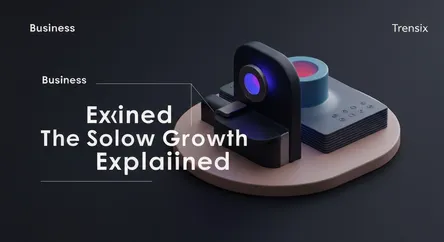Business
The Solow Growth Model Explained

Discover the Solow Growth Model, a key economic framework explaining long-run growth through capital accumulation, labor growth, and technology.
What is it?
The Solow Growth Model is a foundational framework in macroeconomics that explains long-run economic growth. Developed by Nobel laureate Robert Solow, it posits that an economy's output is determined by three key factors: capital accumulation (investment in machinery and infrastructure), labor growth (population increase), and technological progress. The model demonstrates how increasing these inputs can grow an economy, but it highlights that only technological progress can lead to sustained per-capita growth and permanently higher living standards.
Why is it trending?
While a classic theory, the Solow model remains highly relevant in policy debates about global development and stagnant productivity. Economists use it to analyze why growth rates differ between countries and to understand the impact of policies on national income. It's trending amid renewed focus on boosting long-term investment and innovation to combat economic slowdowns. The model provides a clear lens for evaluating policies aimed at increasing savings rates, encouraging investment, and fostering the technological advancements needed for sustained prosperity.
How does it affect people?
The model’s conclusions directly influence policies that shape people's economic well-being. Governments that encourage savings and investment can foster capital accumulation, leading to better infrastructure, more productive jobs, and potentially higher wages. Crucially, the model's emphasis on technological progress underscores the importance of public investment in education, research, and development. These policies, aimed at boosting innovation, are seen as the primary drivers for improving a population's long-term standard of living and overall quality of life.